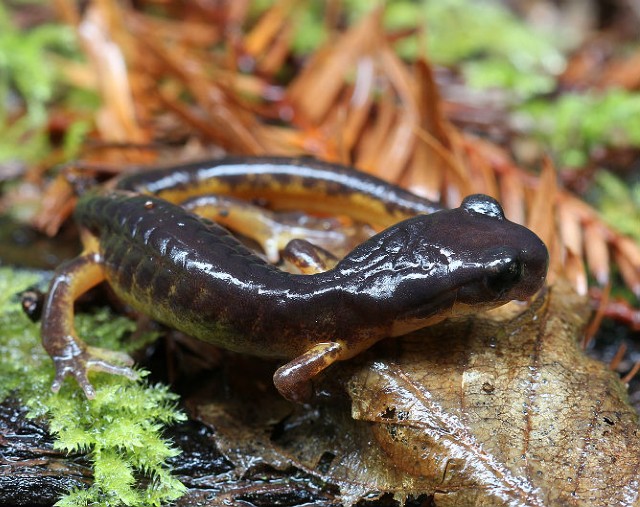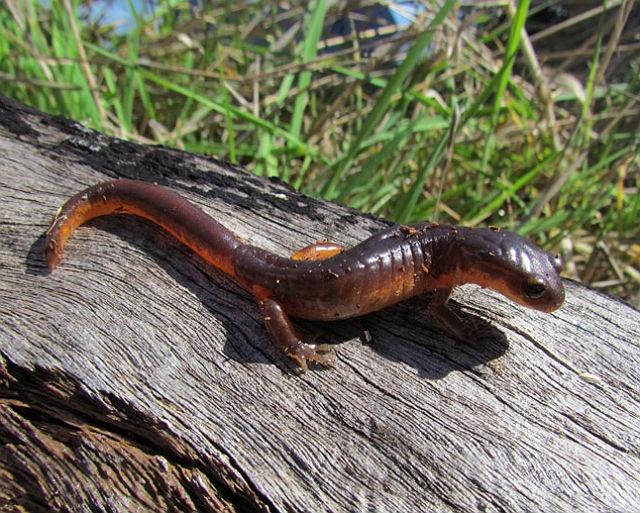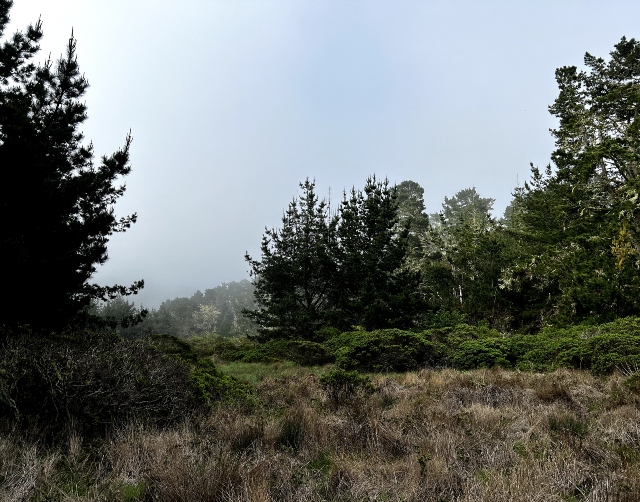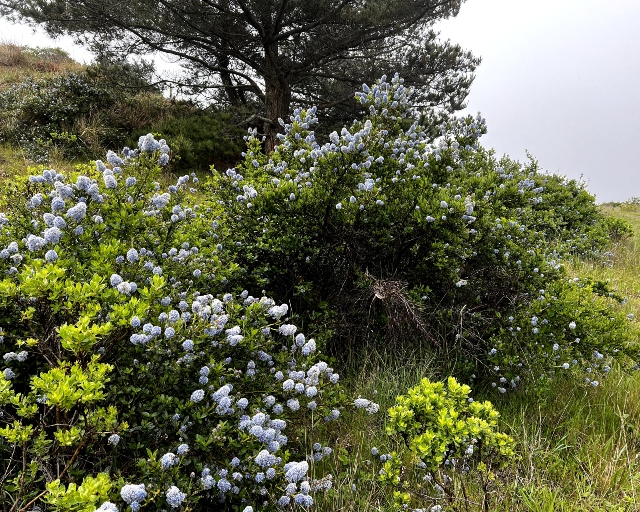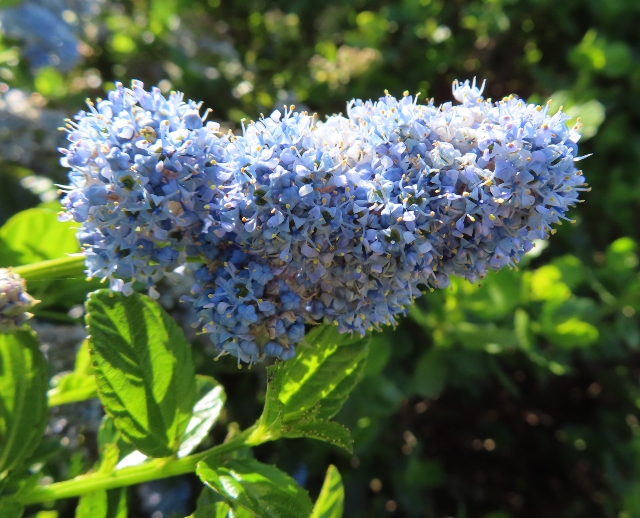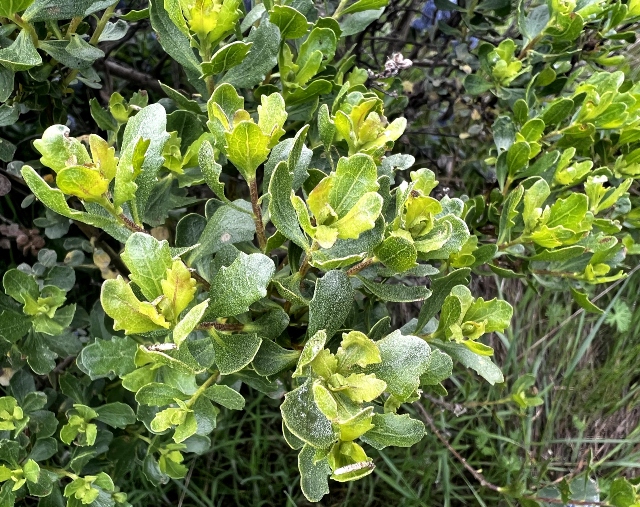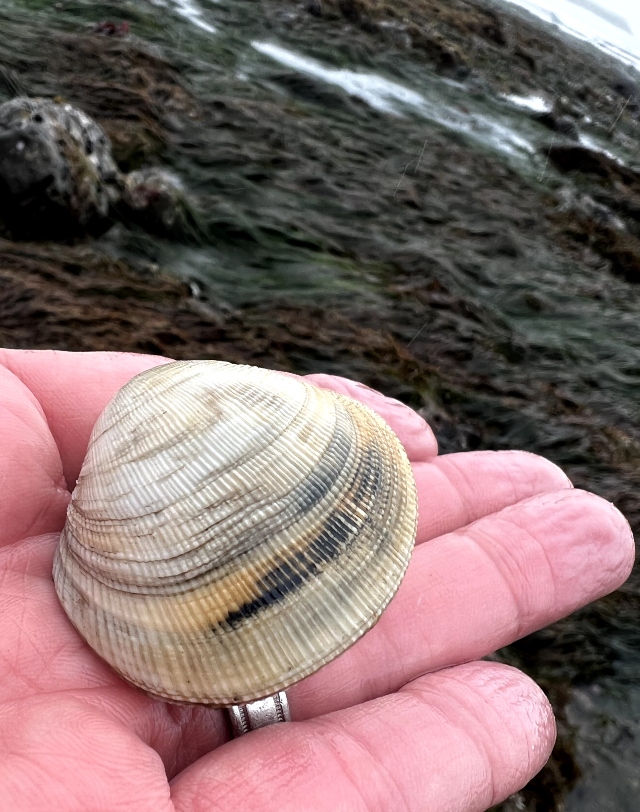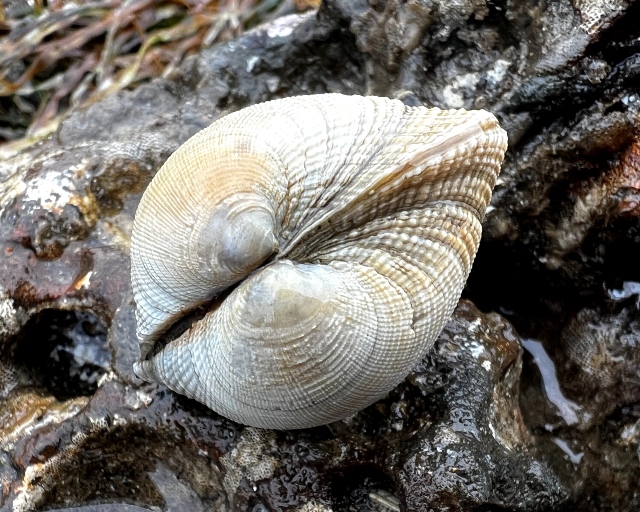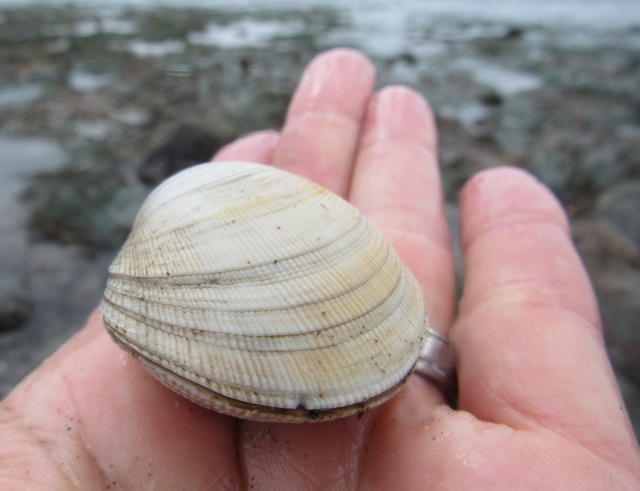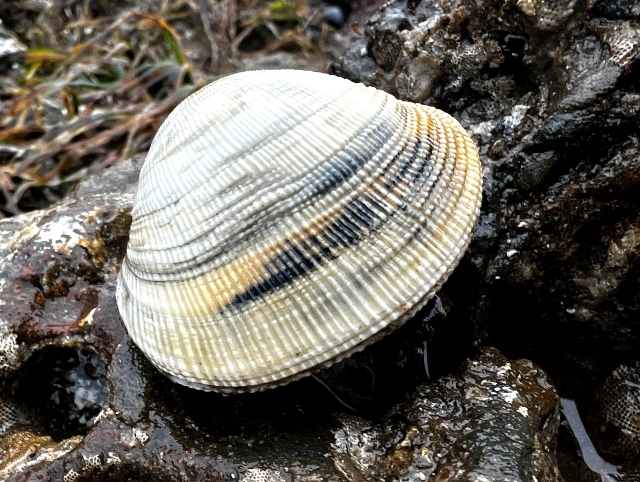This is my second species of Ensatina that I’ve found while herping California. It tends to be darker in color than the Yellow-eyed Ensatina, which was the first species of this fine salamander that I had come across while looking for reptiles and amphibians.
Ensatinas live in humid forests, woodlands and other areas with woody debris. They hide under logs, bark piles at the base of snags, stumps and even woodpiles in residential areas for cover from weather and protection from predators.
They reach a total length of three to five inches, and can be identified primarily by the structure of the tail – it is narrower at the base and looks like it has a constriction band. They also seen to have very “expressive” faces.
The Oregon Ensatina belongs to a large family know as Lungless Salamanders, because they do not have lungs; instead, they absorb oxygen directly through their skin. They must remain moist at all times so that oxygen and carbon dioxide can diffuse through the skin.
This species is fully terrestrial and the eggs are deposited under logs, in rotting stumps or in other moist environments on the forest floor. Individuals overwinter below the frost line in talus slopes, mammal burrows, root hollows or other underground cavities.
Ensatinas are most active during wet weather and forage on the forest floor for insects, spiders, worms and other arthropods. When threatened, individuals excrete poison from glands on the top of the tail and arch their tail toward the threat. If captured they may autotomize (drop) their tail, which creates a diversion while the salamander escapes.


